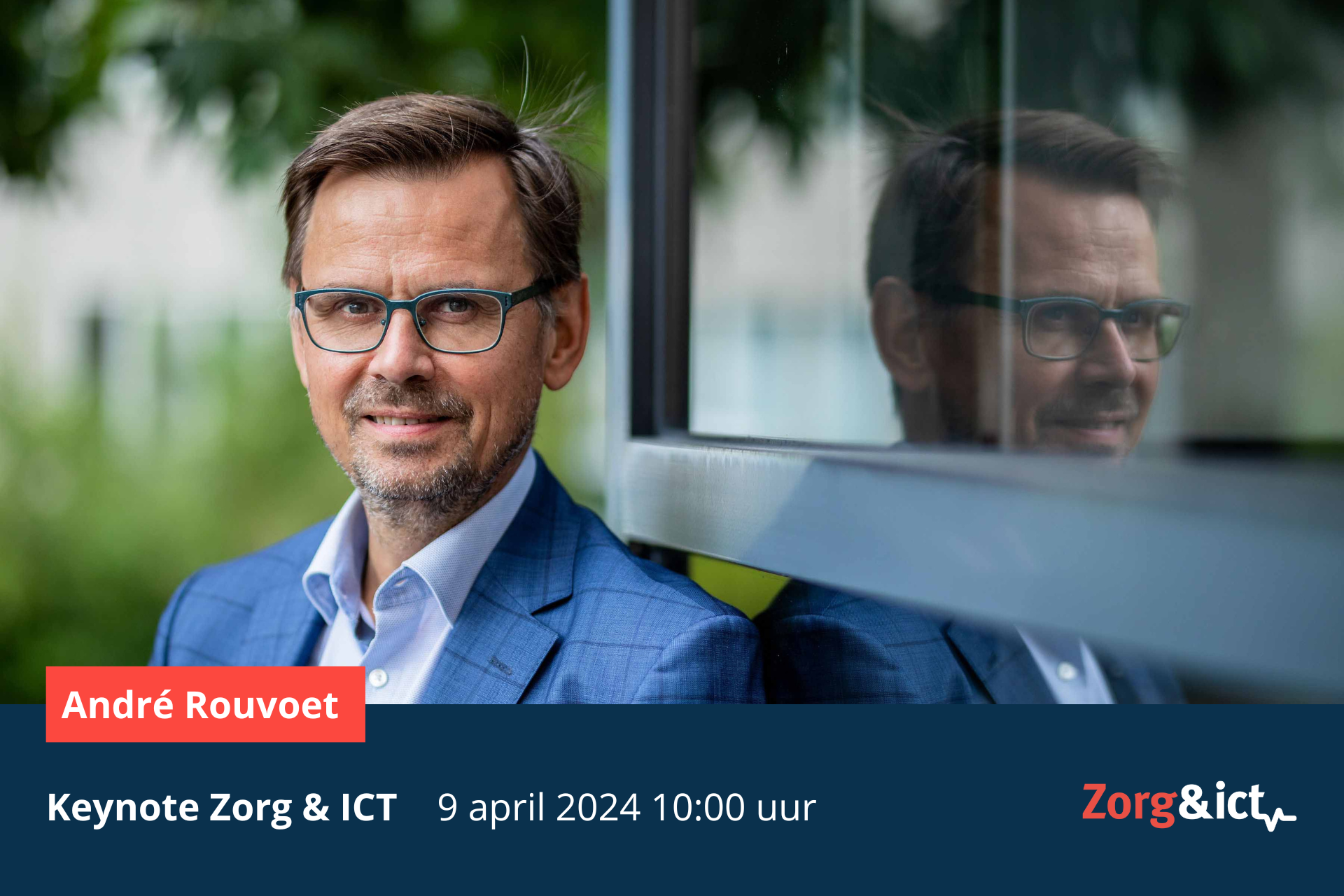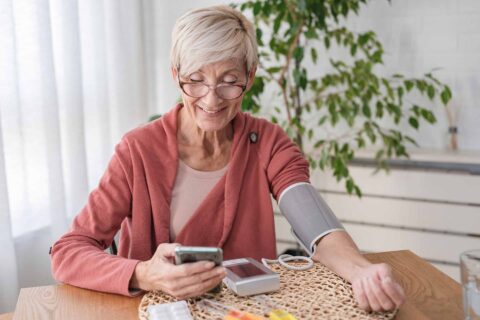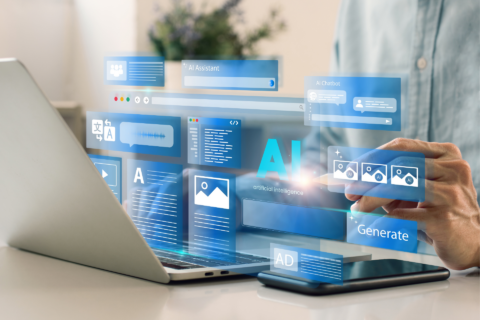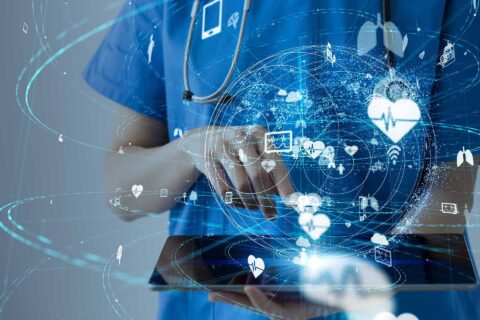The growth toward data maturity at GGD GHOR Nederland has gone by leaps and bounds: in a few months from 'zero data' to 17 million digital files. Systems and links were rapidly built during corona. A data theft strained the learning curve. The use of healthcare data is all about the balance between availability and security, is the lesson learned by chairman André Rouvoet: "Boundless data availability is dangerous."
"As innocuous as it sounds if you've had a test or a prick, it is medical data," Rouvoet said. "That's up to the citizen. We are very meticulous about that. That data theft affected a limited number of people, but it has been a lesson. We as GGD GHOR Nederland therefore constantly connect data availability with data security. Boundless data availability is dangerous. If people entrust their data to the GGD then it must be safe, especially if we work with data on a larger scale in the future."
More meaning
That public health care is also moving in this direction is beyond dispute as far as Rouvoet is concerned. "GGD GHOR Nederland makes a strong case for health in all policies. This is not just about health, but also about the living environment, the layout of the neighborhood and the state of the homes. You need data about that. If there is mold on the walls, it is no coincidence that health disparities are increasing. We see it as our task to set up an information system for the GGDs so that together we can have more meaning for public health."
From data to knowledge
Such use of data merits a small caveat, Rouvoet argues. Meaning is not in the data per se, but in the application. "Data availability is nice, but then you only have data. Data by itself does nothing. You have to work with it to process it into information. You have to use data together with knowledge and experience of professionals. The best part is when knowledge also leads to wisdom. If you bring those four layers together, you can focus your efforts much better."
Effective use
As an example of effective use of data, Rouvoet cites the fine-tuned vaccination initiatives during corona aimed specifically at vulnerable groups. "By mapping which neighborhoods had lower vaccination rates, we were able to be present there with a bus or pop-up location. Basically, it works like this in other areas as well. In youth health care, you need data on obesity or drinking and smoking to know where to focus your education campaigns."
Such a digitally driven way of working is relatively new to public health care, Rouvoet acknowledges. "Before corona, GGD GHOR Nederland had zero data nationwide. After corona, we had the data of 17 million Dutch people in our bins, in a limited area, namely only where testing and vaccination were concerned."
Collective platform
For proper understanding, Rouvoet does want to say that GGD GHOR Nederland, as the umbrella trade organization of the 25 GGDs and GHOR agencies, is not so much a data holder as a data processor. "The regional GGDs have the data, it's their residents. There is no need or ambition for us to get at that or work with that data, unless at the request of and with the permission of the GGDs. What we have started to do is to facilitate, support and align nationally, so that there is more interchangeability. The GGDs' data are increasingly coming together on a collective platform."
Mutual exchange
During the pandemic, the importance of data sharing came into sharp focus. "Source and contact investigation for an infectious disease is a classic task of the GGD. Before corona, that was very much focused on our own region. But during corona we noticed how easily an outbreak can cross borders. Someone who lived in South Holland turned out to be working in Zeeland, for example, but going out in Brabant. To make that visible, you need mutual exchange."
Tent in the storm
The need for accurate digital information combined with the size of the pandemic proved to be a significant burden on the IT infrastructure in place at the time. "We have a system for source and contact research called HPZone. Originally, 250 people worked with it nationwide, because well, how often does TB or Legionella occur? During Corona, eight thousand of us used the same system to do thousands of examinations a day. Then, of course, you see the limitations of such a system."
"For testing and vaccination, we developed CoronIT during the crisis. That succeeded, but it was typically a case of pitching your tent during the storm. That is far from ideal. The upshot, however, was that when we started vaccinating from January 2021, we could immediately transmit all the shots to RIVM from day one. That was very important for monitoring vaccination rates. The hospitals and general practitioners were still working months later with notepads and laptops with names of patients and employees."
Tuition money
That diligence in aligning its own digital capacity is still cause for Rouvoet's pride. "We have shown that we can do much more collectively. While retaining the independent responsibility of the GGDs, we managed to create a basic facility to which new applications and data sources could connect."
Leergeld also had to pay GGD GHOR Nederland for the stormy scale up. For the corona operation, the organization had to rely on temporary workers. A few took the opportunity to see or even sell personal data. "This was a data theft that we acted on immediately. Something like this cannot always be prevented. Even at NASA, you can take a screenshot with your phone and pass it on as a matter of course. None of that is an excuse. You have to do everything you can to protect people's data. So we have become even tighter on data security. There are tight protocols about who gives permission for what. Without permission, nothing is shared and we as a trade association can't do anything with the data we manage."
Pandemic preparedness
Focus on digital security, according to Rouvoet, also emphatically means looking ahead. "You cannot assume that what you are working with now will also be adequate ten years from now. We can be satisfied with the systems and procedures we have developed now, but so were we ten years ago with the systems we had then. And they turned out to be inadequate. You have to keep up, you have to invest."
In a broader sense, Rouvoet is thinking about over all pandemic preparedness, but digital infrastructure is an integral part of it as far as he is concerned. "Pandemic preparedness means not only that we have enough trained people and money, but also that we are able to keep our systems up to date. If a new emergency occurs, and it doesn't have to be a pandemic, do we have our systems and data in place?"
Strengthen connection
A future-proof digital infrastructure, at least in Rouvoet's eyes, is a cross-sector one. "We have laid a foundation through covid to do that well within public health. But it is also important to strengthen the connection between public health, cure and care in terms of data. For me it is not primarily about exchange of data, because what should I do with hospitals' data? It is about using the same concepts, speaking the same language and using the same standards. Only when we synchronize these can we strengthen each other. In this we still have a way to go in healthcare. Perhaps our experiences with covid can help us take new steps more broadly in healthcare."
Data availability is one of the core themes during Zorg & ict 2024. The largest health tech event in the Netherlands will be held from April 9 to 11 at Jaarbeurs in Utrecht. André Rouvoet will perform as one of the keynotes on the mainstage.












